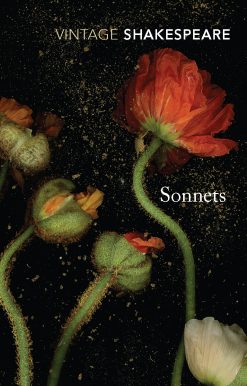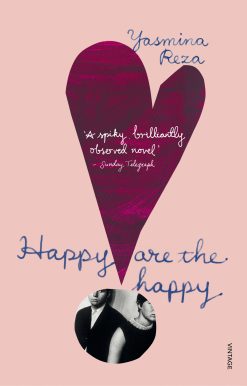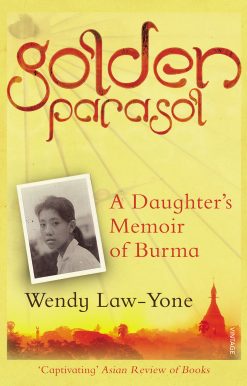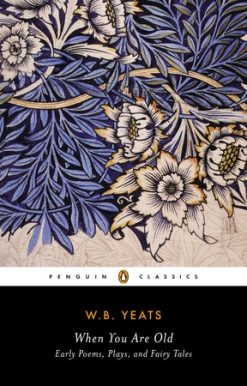Letters to a Writer of Color
14.00 JOD
Please allow 2 – 5 weeks for delivery of this item
Description
A vital collection of essays on the power of literature and the craft of writing from an international array of writers of color, sharing the experiences, cultural traditions, and convictions that have shaped them and their work“Electric essays that speak to the experience of writing from the periphery . . . a guide, a comfort, and a call all at once.”—Laila Lalami, author of Conditional Citizens Filled with empathy and wisdom, instruction and inspiration, this book encourages us to reevaluate the codes and conventions that have shaped our assumptions about how fiction should be written, and also challenges us to apply its lessons to both what we read and how we read. Featuring: • Taymour Soomro on resisting rigid stories about who you are• Madeleine Thien on how writing builds the room in which it can exist• Amitava Kumar on why authenticity isn’t a license we carry in our wallets• Tahmima Anam on giving herself permission to be funny• Ingrid Rojas Contreras on the bodily challenge of writing about trauma• Zeyn Joukhadar on queering English and the power of refusing to translate ourselves• Myriam Gurba on the empowering circle of Latina writers she works within• Kiese Laymon on hearing that no one wants to read the story that you want to write• Mohammed Hanif on the censorship he experienced at the hands of political authorities• Deepa Anappara on writing even through conditions that impede the creation of art• Plus essays from Tiphanie Yanique, Xiaolu Guo, Jamil Jan Kochai, Vida Cruz-Borja, Femi Kayode, Nadifa Mohamed in conversation with Leila Aboulela, and Sharlene Teo The start of a more inclusive conversation about storytelling, Letters to a Writer of Color will be a touchstone for aspiring and working writers and for curious readers everywhere.
Additional information
| Weight | 0.19 kg |
|---|---|
| Dimensions | 1.53 × 13.04 × 20.22 cm |
| by | Deepa Anappara, Madeleine Thien, Taymour Soomro, Tiphanie Yanique, Xiaolu Guo |
| Format | Paperback |
| Language | |
| Pages | 272 |
| Publisher | |
| Year Published | 2023-3-7 |
| Imprint | |
| Publication City/Country | USA |
| ISBN 10 | 059344941X |
| About The Author | Deepa Anappara grew up in Kerala, southern India, and worked as a journalist in cities including Mumbai and Delhi. Her debut novel, Djinn Patrol on the Purple Line, was named one of the best books of the year by The New York Times, The Washington Post, Time, and NPR. It won the Edgar Award for Best Novel, was longlisted for the Women’s Prize for Fiction, and was shortlisted for the JCB Prize for Indian Literature.Taymour Soomro was born in Lahore, Pakistan. He has worked as a corporate solicitor in London and Milan, an agricultural estate manager in rural Pakistan, and a publicist for a luxury fashion brand in London. His short fiction has been published in The New Yorker, and he is the author of the novel Other Names for Love. |
“I found myself circling passages on every page, discussing the themes with anyone who would listen to me. . . . It is a book about how we see ourselves and how we can, through reading and storytelling, draw ourselves and each other in a new, more complete image.”—The Boston Globe“If you’ve ever felt that your creative choices were being dismissed or ignored in a fiction workshop, if you’ve been pressured to make your writing more ‘accessible,’ if you’ve strained under the demand to write about certain things only and to silence others—this book is for you.”—Laila Lalami, author of Conditional Citizens“. . . a beautiful and galvanizing anthology, featuring some of the most dazzling writers working today.”—Autostraddle“Deepa Anappara and Taymour Soomro cultivate a community for melanated readers and the writers who create for them. . . . The unifying thread is a pulsing need to construct a world where we are rendered whole and vivid on the page.”—Essence“A whip-smart collection of essays . . . I read parts of it with the joy of recognition and other parts with the astonishment of revelation.”—Kamila Shamsie, author of Home Fire“A brave and triumphant act of resistance and decolonization, a necessary resource for writers and educators alike, and a must-have book for readers who care about diversity and inclusion in literature. Reading this book, I felt seen and empowered.”—Nguyễn Phan Quế Mai, bestselling author of The Mountains Sing and Dust Child“Funny, moving, thought-provoking, default-challenging, engaging, and full of so much heart and so many voices, this book feels to me like nothing less than a revolution.”—Melissa Fu, author of Peach Blossom Spring“Witty, candid, bold, gutsy, eye-opening and sometimes eye-popping, revelatory and wise! If you want to know what writers talk about among themselves, you’ve found it.”—Aminatta Forna, author of The Memory of Love“Here, matters of craft are interwoven with those of personhood and politics, offering a global range of perspectives rarely found in books on writing.”—Tania James, author of Aerogrammes and The Tusk That Did the Damage“A revelatory reading experience. A book that guides, teaches, and gives off its own shimmering light, that demands to be read and re-read.”—Katherine J. Chen, author of Joan“It is essential reading in a world full of sound bites and furious noise.”—Tash Aw, author of Strangers on a Pier“A stunningly personal and practical compilation of literary and life advice . . .”—Kirkus Reviews (starred review)“This captivating love letter to writers of color deserves to be in every library the world over.”—Booklist (starred review) “A vivid look at what it means to be a writer of color today.”—Publishers Weekly (starred review) |
|
| Excerpt From Book | On Origin StoriesTaymour SoomroI collect stories about con artists. Often the stories stress what is purely, willfully manipulative in the con and its pursuit of simple financial gain, but what interests me more is the desire for a disguise, its art and effects.Tom MacMaster, a cis-het white American, blogged as a Syrian lesbian. Sophie Hingst posed as the relative of Auschwitz survivors and sent “testimonies” to Israel’s Yad Vashem memorial of people who had never existed. Belle Gibson, a wellness guru, claimed to have survived various cancers. Hargobind Tahilramani masqueraded as film studio executive Amy Pascal. And there’s Rachel Dolezal, Anna Delvey, and Dan Mallory too. There is a public fascination with uncovering these cons, with unmasking a “true” identity underneath, with pathologizing these acts as sickness or crime.But I feel a kind of affinity, perhaps even an uneasy kinship, with these actors. My identity seems to me unavoidably a performance and a disguise, not only because it seeks to constrain me in one persona when I am constantly in flux but also because there has always been a conflict between who I think I am at any given moment and who others think I am, so that my reflection flickers endlessly in a mirror. One of the features that distinguishes good fiction for me is that it captures this shiftiness of self, so that Anna Karenina or Rahel Ipe or Sethe cannot be constrained within a fixed identity, cannot easily be reduced to a set of character traits. I wonder then at the relationship between the stories I tell about myself and the stories I write. Where is the con and where is the truth?These questions recur in Nabokov’s formulation on fiction: “Literature was born on the day when a boy came crying wolf, wolf and there was no wolf behind him. . . . Between the wolf in the tall grass and the wolf in the tall story there is a shimmering go-between. That go-between, that prism, is the art of literature.” For him, fiction is a commitment to untruth rather than truth. It is the ultimate, unimpeachable con.When I left my job at a corporate law firm to write a novel, my greatest preoccupation was not that I would fail but that my fiction would unmask me. I was living a sort of double life at the time: queer in London but not in Karachi, desi in Karachi but as English as possible in London. This kind of life—of multiple selves, of one person in my head and another outside, of one person in one place and another elsewhere—was familiar to me. It was how I’d always been, but my ability to police these selves, to keep them separate, to keep separate the communities that knew me as one person and those that knew me as another, had become more difficult, once I left home at eighteen for university and began to live these lives rather than just to imagine them.So when I sat down to write, I determined to write as far away from these selves as I could, “as though tossing a grenade,” as the protagonist of my novel Other Names for Love says. To support myself, I tutored the children of wealthy Londoners. One of these was a young woman who had enrolled in a graduate program. First, I guided her through the writing process for a thesis on beauty myths and, when she did well on that, through the writing process for a subsequent thesis on the ethics of face transplantation.My student preferred that we should read and make notes together and, as this was on the clock, it suited me. I spent hours in her Knightsbridge basement apartment reading aloud to her from articles and textbooks, dictating notes, interrupted occasionally by her mother, who would turn up with wads of fifty-pound notes to pay me, and her handsome Cypriot boyfriend, who, when he wasn’t napping, drifted in and out of the living room in a short toweling robe which promised at any moment, if I paid sufficient attention, to reveal a glimpse of the inside of his thigh.I was in search of a protagonist and a plot for my novel. My student, with her ennui, anxiety, and careless wealth, seemed like a character I could imagine piloting the kind of novels I’d read, and the subject matter of her thesis seemed topical and arbitrary enough that none of it could say anything about me at all: the perfect Keyser Söze. Over the two years that I taught her, I wrote, polishing and repolishing the first part of the manuscript. I bought that year’s edition of a guidebook called The Writers’ & Artists’ Yearbook, which included an alphabetical list of British agents with brief descriptions, and sent three chapters and a cover letter to a selection of nine agents, who, within a couple of months, rejected the material in standard form.Thinking back, I can’t imagine there could have been any other outcome, but at the time it was startling, so humiliating I couldn’t speak of it or think of it or write anymore, ever again. I left London for the safety and security of my parents’ home in Karachi. And then, at a loss for what to do and desperate to feel useful, I took over the family farm. I grappled with who I was and who I wanted to be and finally, after coming out to my parents, integrated more coherently the separate selves I had constructed—so that I no longer had to make such careful and fearful decisions about which self I’d be in any given context. I moved back to London. A little humbler, with lower expectations, I thought I’d try writing again. I enrolled in a writing program. I wrote more freely than before, as close to myself as I wanted, no longer throwing a grenade. I began to publish my work, which now frequently featured queer brown characters doing things in Pakistan.On a recent occasion, I found myself telling this story to a group of students. You see, I told them, I could write truthfully once I lived truthfully. But it’s fiction, one of the students said. Yes, I said. It’s fiction, but fiction has to be truthful, and once I was true to myself, I could write truthfully, and I realized as I said all this, repeating true and truthful again and again, trying with the repetition to persuade all of us, that this relationship between truth and fiction didn’t really make sense. This origin story, though it had satisfied me and seemed to satisfy others, though it articulated a voguish value system, by celebrating identity, coming out, self-love, self-actualization, though it provided a teachable moment, a craft lesson, was a con, was a wolf shimmering in the tall grass.Where had it come from? And what was it doing?It celebrated a particular way of being, of being a good queer, a good immigrant; worse, by endorsing a true identity for me, by drawing a link between that true identity and craft, it suggested in a sly way that my identity is the story I should tell, that queer immigrant is the lane my fiction belongs in.The fiction of mine that has been most successful with industry gatekeepers is fiction that stays in my lane. But on my writing program, I studied with three cis-het white men for whom there seemed to be no lane at all, none that constrained them at least. One of them was writing a novel with a Japanese protagonist, another with an Iraqi, a third a Chinese. Their novels were published soon after we finished our degrees. Their writing and their success unsettled, even irritated me. Was it jealousy? It was a kind of jealousy, that they were allowed to, that they had the audacity to tell any story they wanted, as far from their lives, with protagonists as different from themselves as they could possibly be.It made me wonder whether the power a writer has over their fiction is a power the writer has over their person. The imperative to stay in your lane, to write what you know, these are forces I think many writers must guard against, though some—those who are queer, those who are racialized—seem to be more vulnerable and more sensitive to its effects. The gatekeepers and the readers are not so easily conned by us, so that Elena Ferrante is presumed to be Lenù in her Neapolitan Quartet, so that Monica Ali is presumed to write well only when she writes about Bangladeshi immigrants.By writing freely, each of the three men I studied with reminded me I had less power than he did, that his fiction, his person was not constrained in the way that I was.So, if my origin story is a con, are there are other stories I can tell about my origins as a writer? Or, if fiction is a con, are there other cons that can tell more about how and why I write? |
Only logged in customers who have purchased this product may leave a review.





Reviews
There are no reviews yet.